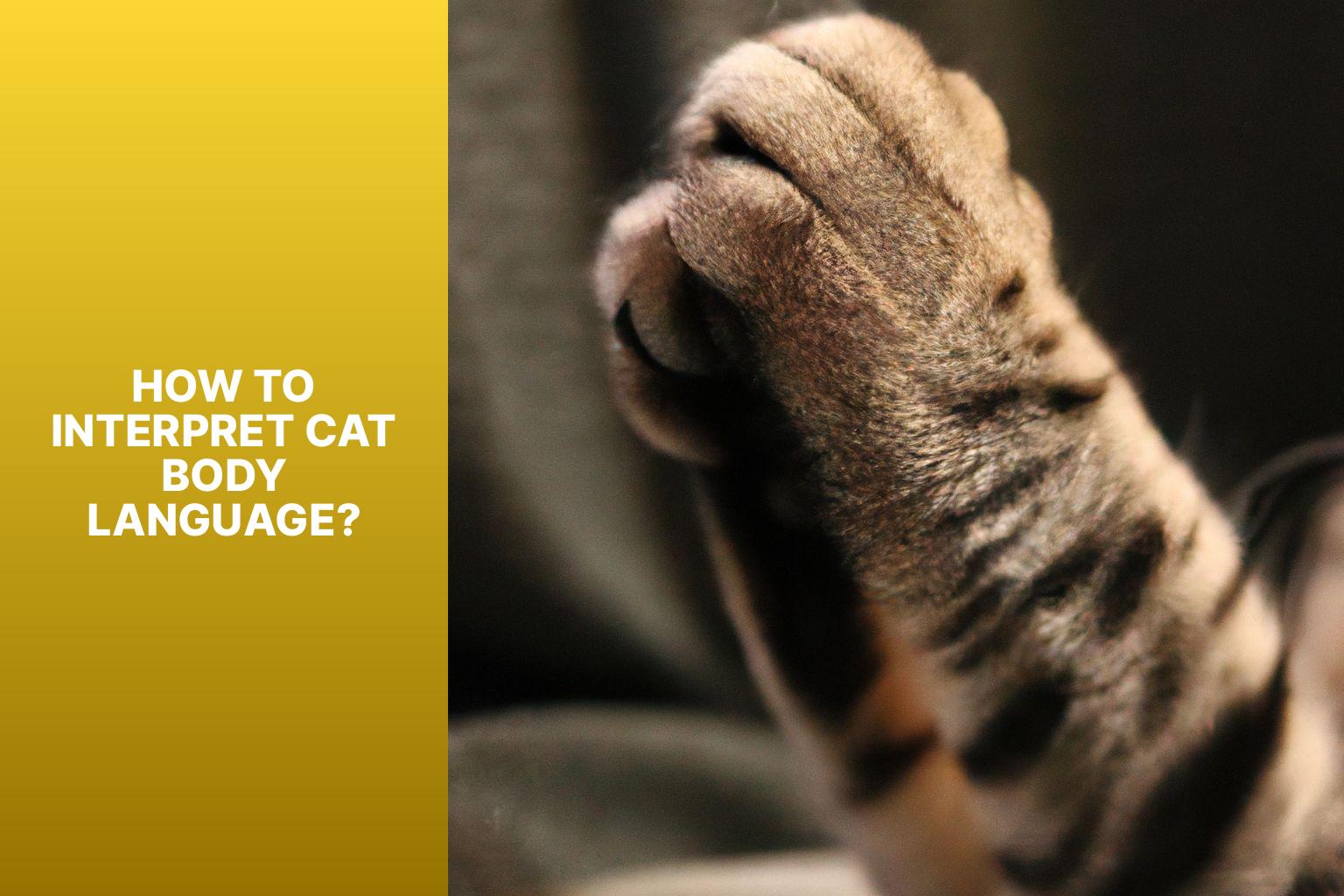Understanding Cat Behavior: Hugging and Biting
Cat behavior can sometimes be mysterious and puzzling, especially when it comes to their interactions with their human companions. One common behavior that cat owners may observe is their cat hugging their arm and occasionally biting. While this behavior may seem confusing or even concerning, it has underlying reasons and motivations. By understanding the possible explanations for why cats exhibit these actions, you can better decipher their behavior and respond appropriately.
Why Does My Cat Hug My Arm?
1. Marking Territory: Cats have scent glands in their paws, and by hugging your arm, they may be marking you as a part of their territory. It’s their way of claiming ownership and showing comfort and familiarity.
2. Seeking Affection and Attention: Cats may hug your arm as a way to seek affection and attention from you. By engaging with you physically, they are expressing their desire for closeness and interaction.
3. Playful Behavior: Hugging your arm can also be a form of play for cats. Just like they use their paws to play-fight with other cats, they may perceive your arm as a playful target and engage in this behavior as a way to channel their energy.
Why Does My Cat Bite Me?
1. Overstimulation or Excitement: Cats can sometimes become overstimulated during play or petting sessions, leading to biting as a way to release their pent-up energy. It’s essential to recognize their body language and respect their boundaries to avoid reaching this point.
2. Communication and Boundary Setting: Biting can also be a form of communication for cats. By biting gently or giving a warning nip, they may be indicating that they want the interaction to stop or that they need some space. It’s their way of setting boundaries and expressing discomfort.
3. Fear or Aggression: In some cases, biting can be a result of fear or aggression. Cats may bite as a defensive mechanism when they feel threatened or frightened. It’s crucial to understand the context in which the biting occurs and seek professional help if the behavior is persistent or escalating.
How to Interpret Cat Body Language?
To better understand and communicate with your cat, it’s essential to interpret their body language. Key cues to observe include:
1. Tail Posture: A relaxed or softly curved tail signifies contentment, while an erect or puffed-up tail may indicate fear or aggression.
2. Ear Position: Forward-facing ears typically signify a relaxed and friendly cat. Flattened or backward ears may indicate fear or irritation.
3. Pupil Size: Dilated pupils suggest excitement or agitation, while constricted pupils may signal fear or tension.
How to Respond to Cat Hugging and Biting?
When your cat hugs your arm and occasionally bites, appropriate responses can ensure a harmonious relationship:
1. Provide Appropriate Play and Enrichment: Engage your cat in interactive play sessions to redirect their energy and satisfy their natural instincts. Offer toys and environmental enrichment to keep them mentally stimulated.
2. Recognizing Warning Signs and Giving Space: Observe your cat’s body language and recognize signs of overstimulation or discomfort. Give them space when needed and avoid pushing them beyond their comfort limits.
3. Seeking Professional Help if Needed: If your cat’s hugging and biting behavior becomes problematic or aggressive, it’s advisable to seek guidance from a professional animal behaviorist or veterinarian who can assess the situation and provide tailored advice.
By understanding the reasons behind cat hugging and biting behaviors, interpreting their body language, and responding appropriately, you can nurture a positive and trusting bond with your feline companion.
Key takeaway:
- Understanding cat behavior: Cats may hug and bite as a form of communication, play, or seeking attention.
- Why does my cat hug my arm? Cats may hug your arm to mark their territory, seek affection and attention, or engage in playful behavior.
- Why does my cat bite me? Cats may bite due to overstimulation, to communicate boundaries, or out of fear or aggression.
- Interpreting cat body language: Observe tail posture, ear position, and pupil size to understand your cat’s mood and intentions.
- Responding to cat hugging and biting: Provide appropriate play and enrichment, recognize warning signs, and give your cat space when needed. Seek professional help if necessary.
Understanding Cat Behavior: Hugging and Biting
Cats hugging and biting can be understood by observing their body language and instincts. When a cat embraces your arm and then nips, it is usually a sign of playfulness or overstimulation. Cats are predators with natural hunting instincts. Actively engaging with your cat through play, using wand toys or laser pointers, can help fulfill their hunting behavior. Providing appropriate toys and scratching posts can redirect their biting behavior. Understanding your cat’s boundaries and giving them space when necessary is important. Avoid punishing your cat for this behavior as it can cause fear and aggression. Instead, focus on positive reinforcement and rewarding good behavior. By comprehending the motivations for hugging and biting, you can foster a healthy and happy relationship with your cat.
Why Does My Cat Hug My Arm?
Curious about why cats seem to have a peculiar habit of hugging our arms? Let’s unravel the mysteries behind this adorable behavior in our exploration of cat psychology. In this section, we’ll delve into the reasons why your feline friend engages in arm-hugging antics. From marking their territory to seeking affection and attention, and displaying playful behavior, we’ll uncover the fascinating insights into your cat’s cuddly gestures. Get ready to enter the enigmatic world of cat behavior and discover the true meaning behind those snug arm hugs.
Marking Territory
Cats demonstrate their territorial behavior by hugging or biting as a way to mark their territory.
Seeking Affection and Attention
When a cat seeks affection and attention by hugging your arm, it is expressing its desire for social interaction. Despite their independent nature, cats still crave human companionship. They may rub against you, purr, and meow to get your attention. Hugging your arm is a way for them to physically connect with you and show their need for affection. You will often notice purring and kneading as well, which indicate contentment and relaxation.
It is important to respond positively when your cat seeks affection and attention. Take the time to pet and cuddle with them, meeting their social and emotional needs. This will help strengthen the bond between you and make your cat feel loved and secure.
At the same time, it is crucial to pay attention to your cat’s body language and respect their boundaries. If they show signs of discomfort or agitation while hugging your arm, such as flattening their ears or flicking their tail, give them some space. Remember, each cat is unique, and understanding their individual preferences is key to providing the right level of affection and attention they need.
Pro-tip: Observe and understand your cat’s behavior to better fulfill their affection and attention needs. Remember that cats have their own distinct personalities and preferences in seeking affection and attention.
Playful Behavior
Catnip induces playful behavior in cats by stimulating a playful response. It contains nepetalactone, a chemical compound with this effect.
Interactive toys, such as feather wands or laser pointers, engage and stimulate cats’ playful behavior. These toys mimic prey, encouraging stalking and chasing instincts.
A scratching post redirects cats’ playful energy and prevents damage to furniture or other household items.
Creating hiding spots or using tunnels and boxes encourages cats to engage in playful behavior. They can explore and pounce on hidden toys or treats.
To keep your cat engaged and fulfill their need for play, provide a variety of toys and activities. Interactive playtime with your cat using toys or chasing strings also strengthens the bond. Always monitor play to ensure it remains safe and doesn’t escalate into aggression.
Why Does My Cat Bite Me?
Curious about why your cat sometimes bites you? Let’s explore the reasons behind this behavior, diving into sub-sections like overstimulation or excitement, communication and boundary setting, and fear or aggression. Unravel the mystery behind your cat’s biting habits and gain a better understanding of their unique feline communication. Get ready to decode those occasional nips and establish a deeper bond with your furry friend!
Overstimulation or Excitement
Overstimulation or excitement can cause cats to bite when they become overly stimulated or excited during play or interaction. This biting is a way for them to release energy and express their heightened emotions. It’s important to recognize that cats have different thresholds for stimulation. What may be exciting for one cat may be overwhelming for another. When a cat becomes overstimulated, their bite is not necessarily aggressive but rather a way of asking for a break or some space.
To prevent overstimulation or excitement, pay attention to your cat’s body language. Look for signs such as dilated pupils, a twitching tail, flattened ears, or increased agitation. If you notice these signs, give your cat a break and provide them with some quiet time to calm down.
To avoid overstimulation in the future, provide appropriate play and enrichment activities for your cat. This can include interactive toys, scratching posts, and puzzle feeders to keep them mentally and physically stimulated. Choose play sessions that are suitable for your cat’s age and energy level.
If overstimulation or excitement continues to be a problem despite these measures, it is advisable to seek professional help from a veterinarian or animal behaviorist. They can assess the situation and provide guidance on effectively managing and addressing the issue.
Communication and Boundary Setting
Communication and boundary setting are crucial aspects of cat behavior. Cats naturally communicate and establish boundaries through various means. If their boundaries are crossed or they feel discomfort, they may resort to biting. To effectively set boundaries, consistent training and positive reinforcement are essential. It is important to understand your cat’s body language and signals to facilitate effective communication and boundary setting. Rewarding good behavior using positive reinforcement techniques can help establish clear boundaries. Additionally, verbal cues and body language play a significant role in communicating boundaries. Consistency is key when it comes to setting boundaries with your cat. It is recommended to avoid punishment or negative reinforcement, as they can increase fear and aggression. If you are struggling to establish boundaries with your cat, seeking professional help is advisable.
Fear or Aggression
Cats may display fear or aggression through hugging and biting. It is important to understand the reasons behind these actions to address the underlying issues and prevent harm.
Traumatic experiences: Cats who have had abuse or neglect may hug or bite as a defense mechanism. Creating a safe and calm environment helps them overcome their fears.
Medical conditions: Pain or discomfort can cause cats to become fearful or aggressive. Consult a veterinarian if a cat suddenly starts hugging and biting to rule out any underlying health issues.
Territorial behavior: Cats, being territorial animals, may display fear or aggression if they feel threatened or insecure. Providing vertical spaces, hiding spots, and enrichment can help alleviate territorial issues in cats.
Stress or anxiety: Cats may resort to hugging and biting as a coping mechanism in high-stress situations. Identifying and addressing the source of stress can help alleviate these behaviors.
Lack of socialization or improper handling: Cats that haven’t been properly socialized or had negative experiences with humans may exhibit fear or aggression through hugging and biting. Gradual desensitization and positive reinforcement training can help them become more comfortable and trusting.
How to Interpret Cat Body Language?
Photo Credits: Www.Catcornerblog.Com by Justin Robinson
Curious about what your feline friend is trying to communicate when they hug your arm and give you a little nip?
In this section, we’ll decode the intricate language of cat body gestures. From tail postures to ear positions and even pupil size, we’ll uncover the hidden messages behind these behaviors. Get ready to gain a deeper understanding of your cat’s emotions and strengthen the bond between you and your furry companion.
Tail Posture
| Tail Posture | Description |
|---|---|
| Upright Tail | A cat with an upright tail is confident and content. It signifies relaxation and a friendly disposition. |
| Puffed Up Tail | A puffed up tail indicates fear, agitation, or threat. It is a defensive posture that suggests the cat feels threatened or stressed. |
| Tail Tucked Between Legs | A tucked tail is a sign of fear or submission. It indicates that the cat feels anxious or intimidated and wants to appear smaller or less threatening. |
| Tail Quivering | A quivering tail can indicate excitement, anticipation, or intense focus. It may be a precursor to pouncing or hunting behavior. |
| Tail Wagging | Cats may wag their tails when aroused or agitated, showing heightened interest or frustration. |
| Wrapped Around Another Animal or Object | If a cat wraps its tail around another animal or object, it is a sign of friendliness and trust. It can also be seen as a form of greeting or affiliation. |
Ear Position
The ear position is important for understanding cat body language. It can reveal their emotions and state of mind.
1. Upright and forward ears: When a cat’s ears are upright and facing forward, it shows that the cat is relaxed, alert, and curious. They are interested in their surroundings and open to interaction.
2. Flattened or backward ears: If a cat’s ears are flattened or facing backward, it indicates fear, threat, or aggression. This defensive posture suggests the cat may be ready to defend itself or wants to avoid confrontation.
3. One ear forward, one ear backward: When a cat’s ears are positioned asymmetrically, with one ear forward and the other backward, it suggests uncertainty or conflict. This can be a sign of caution or indecision.
To accurately interpret a cat’s behavior, pay attention to their overall body language and combine it with their ear position. Cats communicate through vocalizations, body postures, and facial expressions, including ear movements. Understanding the meaning of ear position can help cat owners respond appropriately and provide a safe environment for their furry companions.
Remember, each cat is unique, and their body language may vary slightly. By building a strong bond with your cat and consistently observing their behaviors, you can better understand their individual cues and preferences.
Pupil Size
The size of a cat’s pupils can reveal their emotional state and arousal level. Understanding and interpreting pupil size can improve understanding of cat behavior. Here are key points to consider about pupil size:
-
Dilated pupils: Indicate excitement, arousal, or fear. Suggest a threatened or highly stimulated state.
-
Constricted pupils: Suggest relaxation or contentment. Indicate a calm and comfortable state.
-
Variable pupil size: Cat pupils naturally change based on light exposure. Constrict in bright environments and dilate in dim lighting.
-
Observing changes: Sudden dilation may indicate fear or aggression, while sudden constriction could signal discomfort or stress.
-
Context matters: Consider overall body language and behavior for a complete understanding.
Understanding cat body language, including pupil size, allows for appropriate responses and a positive environment. Being attentive and observant can help meet their needs and provide necessary care and support.
How to Respond to Cat Hugging and Biting?
Curious about how to respond when your cat goes from hugging your arm to giving it a bite? Look no further! In this section, we’ll uncover effective strategies to handle this behavior. From providing appropriate play and enrichment to recognizing warning signs and giving your feline friend some space, we’ve got you covered. And hey, if you ever feel like you need an extra hand, we’ll even discuss when it might be wise to seek professional help. Let’s dive in and decode your cat’s puzzling actions!
Provide Appropriate Play and Enrichment
To effectively address cat hugging and biting behavior, it is essential to provide appropriate play and enrichment. Here’s how you can do it:
- Engage in interactive play sessions with your cat using hunting toys, such as wand toys or laser pointers. Aim for at least two 10-15 minute play sessions per day.
- Utilize puzzle toys or treat dispensers to offer mental stimulation. This will require your cat to work for their food or treats, keeping them entertained and engaged.
- Create an enriching environment by incorporating cat-friendly toys, scratching posts, and climbing perches throughout your home. This provides various options for play and exploration.
- Ensure to keep your cat’s toys interesting by regularly rotating them. This prevents boredom and keeps them engaged.
- Consider installing cat trees or shelving units to provide vertical space for climbing and perching.
- Keep toys accessible that your cat can play with independently, such as catnip-filled toys or crinkle balls. This ensures entertainment even when you’re not available.
By providing appropriate play and enrichment opportunities, you can redirect your cat’s energy and fulfill their natural instincts. This helps reduce the likelihood of undesirable behaviors, including hugging and biting.
I have personally experienced the positive effects of implementing appropriate play and enrichment techniques with my cat, Luna. She used to constantly hug my arm and occasionally nip during playtime. After incorporating these strategies, Luna’s behavior improved significantly. She became more content, and her biting and excessive hugging diminished over time. It was evident that providing her with the right outlets for her energy and natural behaviors had a beneficial impact on her overall well-being.
Recognizing Warning Signs and Giving Space
Interacting with your cat requires recognizing warning signs and giving them space as needed. Understanding your cat’s body language can help you identify when they are uncomfortable or overwhelmed. Here are some ways to recognize warning signs and give your cat space:
1. Dilated pupils: Fully dilated pupils may indicate fear or aggression, signaling that your cat wants to be left alone.
2. Flattened or twitching ears: Flattened or twitching ears can indicate irritation or stress. It’s best to give your cat some space and avoid further interaction.
3. Tail flicking or lashing: A cat’s tail is a significant indicator of mood. If the tail is flicking or lashing, it’s a sign of agitation or annoyance. Stop your actions and allow your cat to calm down.
4. Hiding or seeking isolation: When feeling overwhelmed, cats often retreat to quiet, secluded areas. Respect their need for space and avoid disturbing them.
Remember, each cat is unique, and their warning signs may vary. Observe and understand your cat’s body language to provide appropriate space and prevent unwanted behavior or aggression. If you’re unsure about your cat’s behavior or need guidance, seek professional help from a veterinarian or animal behaviorist.
Seeking Professional Help if Needed
Seeking professional help if needed for cat behavior issues can effectively resolve underlying problems and ensure the well-being of both the cat and the owner.
If a cat’s hugging and biting behaviors become excessive, persistent, or aggressive, it is crucial to consult with a professional.
They can professionally identify the issue, modify the cat’s behavior, and provide a medical evaluation if necessary.
Seeking professional help if needed offers tailored advice based on the cat’s individual circumstances and provides expert guidance to manage and resolve these behaviors.
By seeking professional help when needed, owners can ensure the well-being of their cats and establish a harmonious relationship with their furry companions.
Some Facts About Why Cats Hug Arms and Bite:
- ✅ Cats may hug arms and bite as a form of playful expression of their prey instinct.
- ✅ Cats may bite while being cuddled to show affection and happiness.
- ✅ Hugging arms and biting can also be a result of overstimulation or unintentional grooming.
- ✅ Cats may bite and kick if they feel afraid or threatened.
- ✅ Some cats may bite and kick when touched in certain sensitive areas, such as the belly.



